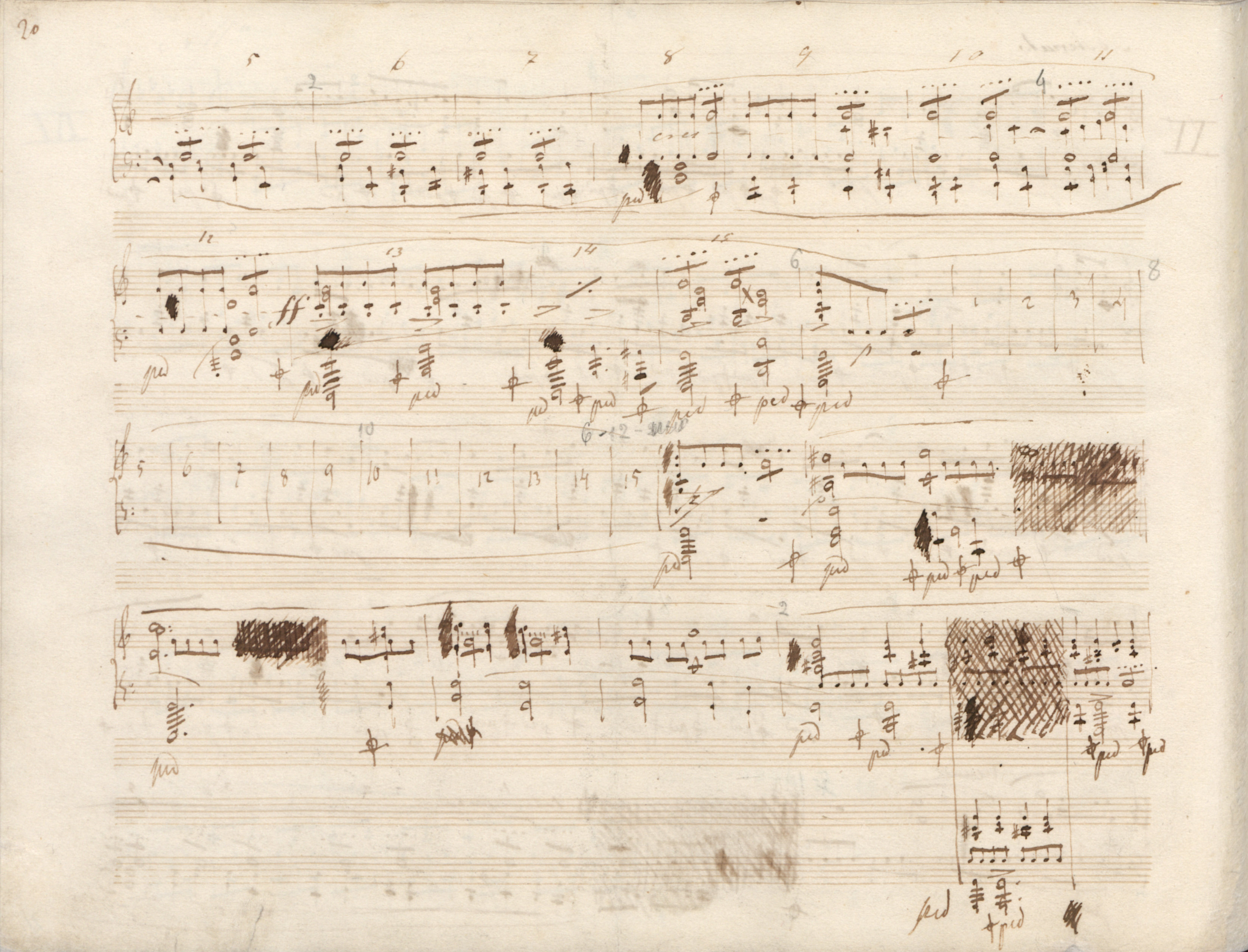Op. 2, Variations in B♭ major
Op. 10, 12 Etudes
Op. 11, Concerto in E minor
Op. 21, Concerto in F minor
Op. 22, Polonaise in E♭ major
Op. 24, 4 Mazurkas
Op. 25, 12 Etudes
Op. 26, 2 Polonaises
Op. 27, 2 Nocturnes
Op. 28, 24 Preludes
Op. 30, 4 Mazurkas
Op. 35, Sonata in B♭ minor
Op. 50, 3 Mazurkas
Op. 63, 3 Mazurkas
Op. 64, 3 Waltzes
(Op. 4), Sonata in C minor




Op. 28 No. 15, Prelude in D♭ major
In FE1 the crotchets in the middle R.H. voice are placed between subsequent quavers in the top voice, closer to the previous than to the next one, with which they are to be played. It can result in doubts as to the synchronization of both voices:
- the R.H. crotchets are placed clearly before the respective L.H. crotchets,
- the minims in b. 40-42 (placed in a similar manner) are to be played simultaneously with the preceding quaver, hence differently.
In FE2 the R.H. crotchets were moved so that they clearly combine with the following, uneven quavers. We do not reproduce this difference in our transcriptions (it does not influence the sound if read carefully).
The same applies to b. 52-54.
Compare the passage in the sources »
category imprint: Graphic ambiguousness; Differences between sources; Source & stylistic information
issues: Inaccuracies in FE, FE revisions
notation: Rhythm

